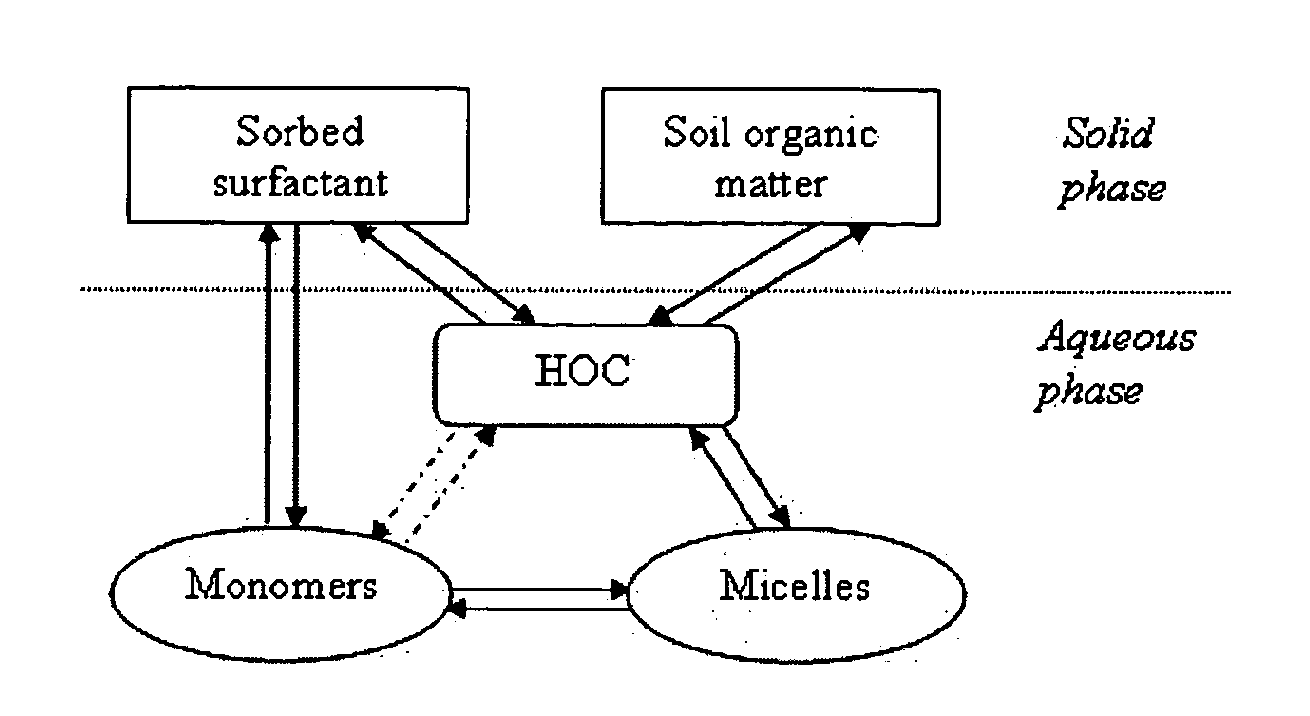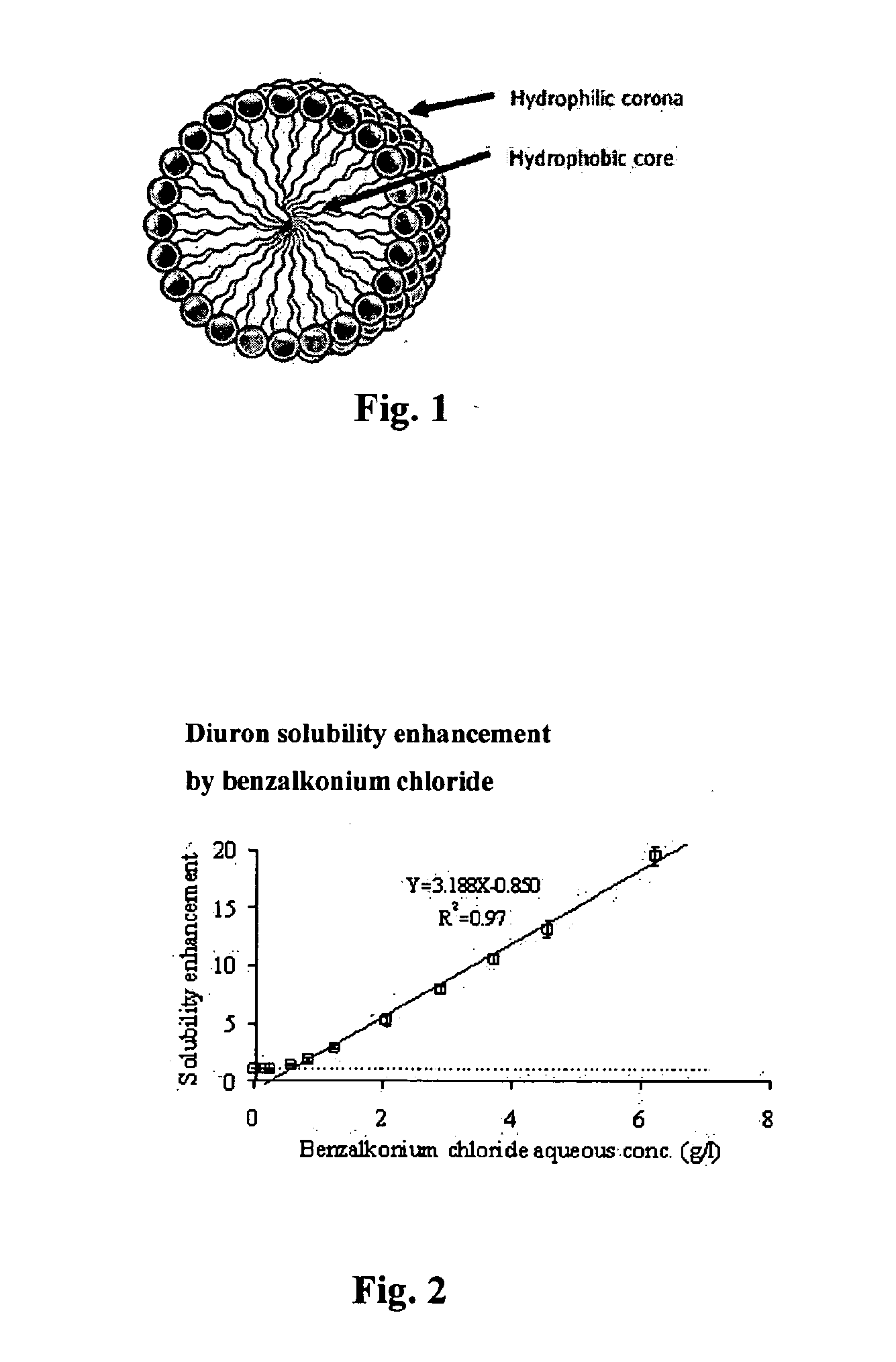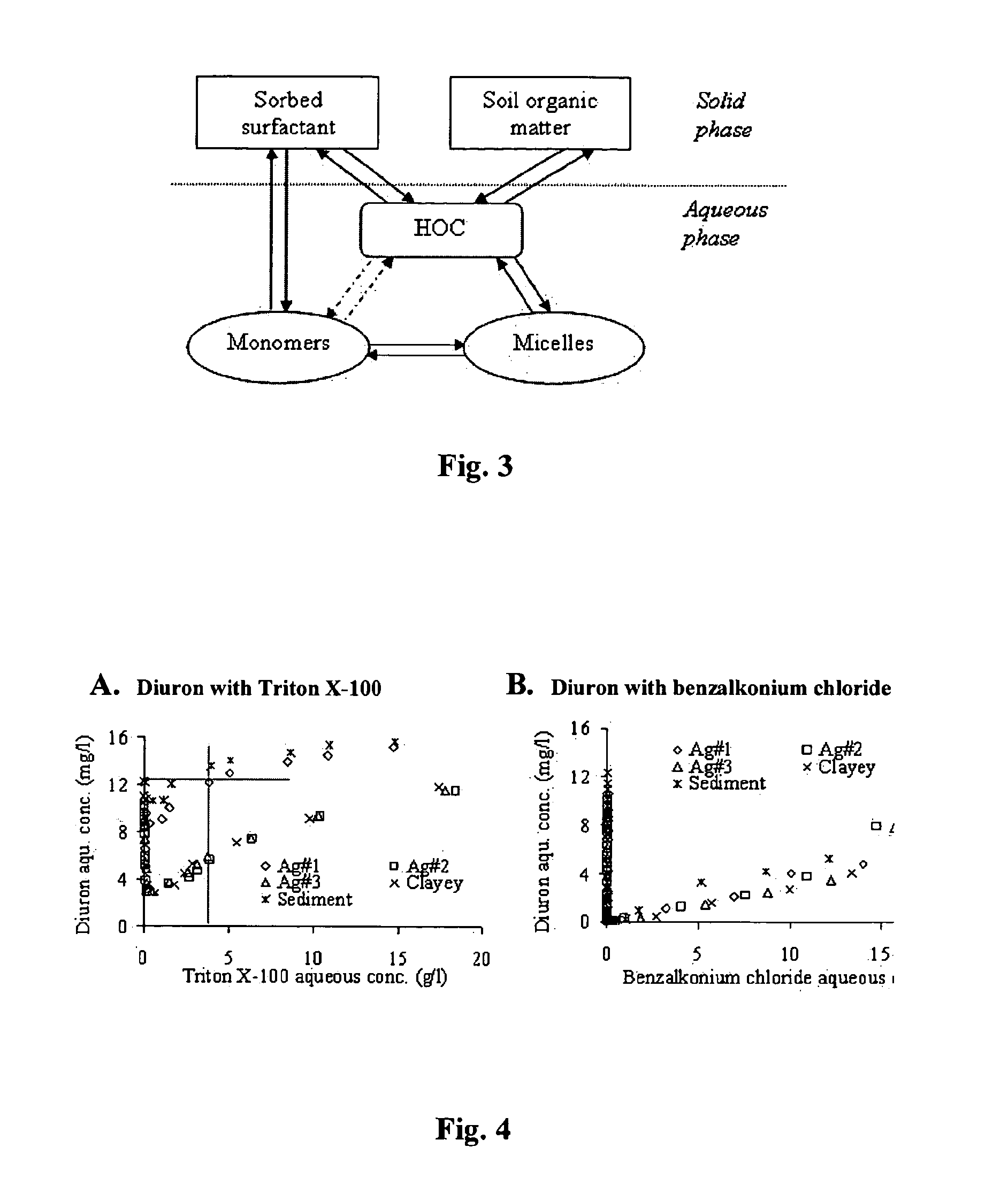Use of magnetic nanoparticles to remove environmental contaminants
a technology of environmental contaminants and magnetic nanoparticles, applied in the field of magnetic particle removal, can solve the problems of difficult cleaning of hoc contamination, accidental or even intentional release at various points in the environment, and limited treatment efficiency of conventional remediation technologies, such as pump and treat, ex situ soil washing, soil sparging, etc., to achieve fast, convenient and highly efficient removal, and reduce the effect of toxic residues
- Summary
- Abstract
- Description
- Claims
- Application Information
AI Technical Summary
Benefits of technology
Problems solved by technology
Method used
Image
Examples
example 1
[0090]Examples 1-8 concern magnetic micelle arrays.
[0091]Chemicals. Atrazine (2-chloro-4-ethylamino-6-isopropylamino-1,3,5-triazine) was purchased from Supelco Inc. (Bellefonte, Pa., USA); diuron (3-(3,4-dichlorofenyl)-1,1-dimethylurea) was purchased from ChemService Inc. (West Chestnut, Pa., USA); biphenyl and naphthalene were purchased from ACROS (Geel, Belgium); tetraethyl orthosilicate (TEOS), [3-(trimethoxysily)propyl]-octadecyldimethysmmonium chloride (TPODAC) (72 wt. % in methanol), a cationic surfactant, and tetramethylammonium hydroxide (TMAOH) (25 wt. % in water) were purchased from Sigma-Aldrich (San Louis, Mo., USA). All these chemicals were used as received. Humic acid (HA), a representative of natural organic mater, was purchased from Sigma-Aldrich
[0092]Synthesis of Fe3O4 particles. The core magnetite particles were prepared through a solvothermal reaction according to a previous report [18]. Briefly, 2.70 g of FeCl2.6H2O and 7.20 g of sodium acetate were dissolved in ...
example 2
[0101]Fe3O4 particles prepared as in Example 1 had a mean diameter of ˜200 nm based on the size measurement of 100 particles and are the aggregates of ˜15 nm nanoparticles, leading to the superparamagnetic behavior of the particles. Powder XRD pattern, SEM, and TEM micrographs of Fe3O4 particles are shown in FIGS. 5A-5C.
[0102]The prepared Fe3O4 particles were treated with TMAOH to make the particle surface negatively charged. TMAOH treatment reverses the surface charges of Fe3O4 particles from positive (ζ-potential=18.0 mV at pH=7) to strongly negative (ζ-potential=−46.3 mV at pH=7), which can be an important step in the synthesis. The negatively charged Fe3O4 surface allows for co-assembly of the cationic surfactant, TPODAC, and silica species on the particle surface and therefore direct deposition of the ordered mesostructured surfactant / silica hybrid layer in the later step, avoiding an intermediate non-porous silica coating on the Fe3O4 particles [18,25]. The highly negatively c...
example 3
[0104]FIGS. 7A and 7B present the small angle XRD pattern and thermogravimetric (TG) curves, respectively, of prepared Mag-PCMAs. One intensity diffraction peak at a 2 theta value of 2.2° and a broad peak at 4-5° can be found in its small-angle XRD pattern, indicating the formation of ordered mesostructure. As demonstrated in its TEM image (FIG. 6B), although the mesostructure is not highly ordered, it shows uniform meso-scale structure due to the formation of micelles with similar diameter and uniform silica wall thickness. These results indicate that a silica confined micelles array layer was successfully coated on the magnetic core surface.
PUM
| Property | Measurement | Unit |
|---|---|---|
| concentration | aaaaa | aaaaa |
| concentration | aaaaa | aaaaa |
| length | aaaaa | aaaaa |
Abstract
Description
Claims
Application Information
 Login to View More
Login to View More - R&D
- Intellectual Property
- Life Sciences
- Materials
- Tech Scout
- Unparalleled Data Quality
- Higher Quality Content
- 60% Fewer Hallucinations
Browse by: Latest US Patents, China's latest patents, Technical Efficacy Thesaurus, Application Domain, Technology Topic, Popular Technical Reports.
© 2025 PatSnap. All rights reserved.Legal|Privacy policy|Modern Slavery Act Transparency Statement|Sitemap|About US| Contact US: help@patsnap.com



